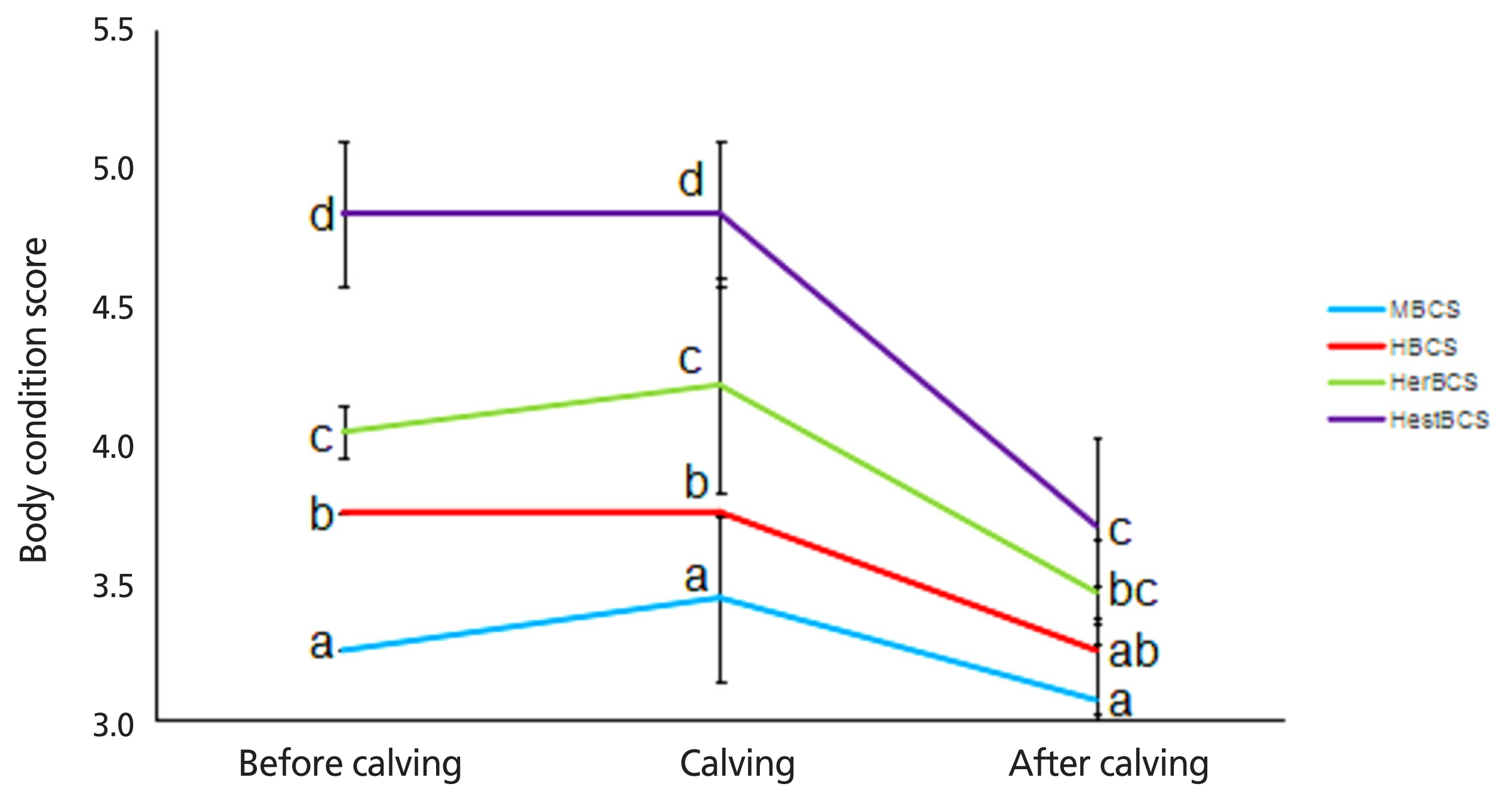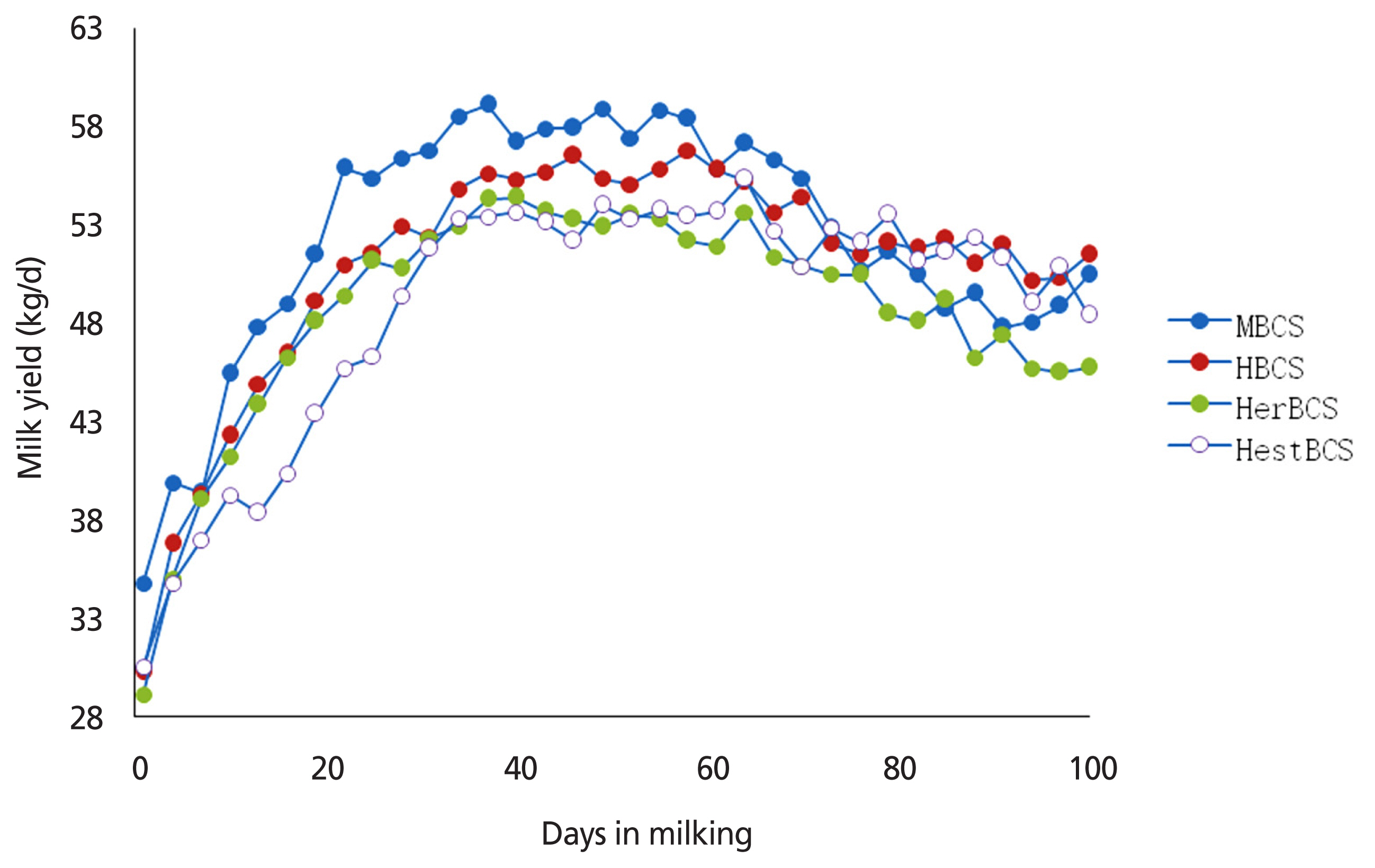1. Esposito G, Irons PC, Webb EC, Chapwanya A. Interactions between negative energy balance, metabolic diseases, uterine health and immune response in transition dairy cows. Anim Reprod Sci 2013; 144:60–71.
https://doi.org/10.1016/j.anireprosci.2013.11.007


3. De Bie J, Langbeen A, Verlaet AAJ, et al. The effect of a negative energy balance status on β-carotene availability in serum and follicular fluid of nonlactating dairy cows. J Dairy Sci 2016; 99:5808–19.
https://doi.org/10.3168/jds.2016-10870


4. Carlson DB, Litherland NB, Dann HM, Woodworth JC, Drackley JK. Metabolic effects of abomasal l-carnitine infusion and feed restriction in lactating Holstein cows. J Dairy Sci 2006; 89:4819–34.
https://doi.org/10.3168/jds.S0022-0302(06)72531-0


5. Gross J, van Dorland HA, Bruckmaier RM, Schwarz FJ. Performance and metabolic profile of dairy cows during a lactational and deliberately induced negative energy balance with subsequent realimentation. J Dairy Sci 2011; 94:1820–30.
https://doi.org/10.3168/jds.2010-3707


6. Enjalbert F, Nicot MC, Bayourthe C, Moncoulon R. Ketone bodies in milk and blood of dairy cows: Relationship between concentrations and utilization for detection of subclinical ketosis. J Dairy Sci 2001; 84:583–9.
https://doi.org/10.3168/jds.S0022-0302(01)74511-0


8. Ospina PA, Nydam DV, Stokol T, Overton TR. Associations of elevated nonesterified fatty acids and β-hydroxybutyrate concentrations with early lactation reproductive performance and milk production in transition dairy cattle in the northeastern United States. J Dairy Sci 2010; 93:1596–603.
https://doi.org/10.3168/jds.2009-2852


10. Giuliodori MJ, Delavaud C, Chilliard Y, Becú-Villalobos D, Lacau-Mengido I, de la Sota RL. High NEFA concentrations around parturition are associated with delayed ovulations in grazing dairy cows. Livest Sci 2011; 141:123–8.
https://doi.org/10.1016/j.livsci.2011.05.007

12. Pires JAA, Delavaud C, Faulconnier Y, Pomies D, Chilliard Y. Effects of body condition score at calving on indicators of fat and protein mobilization of periparturient Holstein-Friesian cows. J Dairy Sci 2013; 96:6423–39.
https://doi.org/10.3168/jds.2013-6801


13. Akbar H, Grala TM, Riboni MV, et al. Body condition score at calving affects systemic and hepatic transcriptome indicators of inflammation and nutrient metabolism in grazing dairy cows. J Dairy Sci 2015; 98:1019–32.
https://doi.org/10.3168/jds.2014-8584


14. Laubenthal L, Ruda L, Sultana N, et al. Effect of increasing body condition on oxidative stress and mitochondrial biogenesis in subcutaneous adipose tissue depot of nonlactating dairy cows. J Dairy Sci 2017; 100:4976–86.
https://doi.org/10.3168/jds.2016-12356


15. Bernabucci U, Ronchi B, Lacetera N, Nardone A. Influence of body condition score on relationships between metabolic status and oxidative stress in periparturient dairy cows. J Dairy Sci 2005; 88:2017–26.
https://doi.org/10.3168/jds.S0022-0302(05)72878-2


16. National Research Council. Nutrient requirements of dairy cattle. 7th edWashington, DC, USA: National Academy Press; 2001.
17. Vailati-Riboni M, Kanwal M, Bulgari O, et al. Body condition score and plane of nutrition prepartum affect adipose tissue transcriptome regulators of metabolism and inflammation in grazing dairy cows during the transition period. J Dairy Sci 2016; 99:758–70.
https://doi.org/10.3168/jds.2015-10046


19. Barletta RV, Maturana Filho M, Carvalho PD, et al. Association of changes among body condition score during the transition period with NEFA and BHBA concentrations, milk production, fertility, and health of Holstein cows. Theriogenology 2017; 104:30–6.
https://doi.org/10.1016/j.theriogenology.2017.07.030


20. Loker S, Miglior F, Koeck A, et al. Relationship between body condition score and health traits in first-lactation Canadian Holsteins. J Dairy Sci 2012; 95:6770–80.
https://doi.org/10.3168/jds.2012-5612


22. Roche JR, Macdonald KA, Schütz KE, et al. Calving body condition score affects indicators of health in grazing dairy cows. J Dairy Sci 2013; 96:5811–25.
https://doi.org/10.3168/jds.2013-6600


23. Mansouryar M, Mirzaei-Alamouti H, Banadaky MD, Nielsen MO. Calving body condition score combined with milk test data and rectal tempreture improved the prognostic value of non-invasive markers for infectious diseases in Holestein cows. Livest Sci 2018; 212:69–74.
https://doi.org/10.1016/j.livsci.2018.03.021

25. Jackson RA, Wills JR, Kendall NR, Green MJ, Murray RD, Dobson H. Energy metabolites in pre-and postpartum dairy cattle as predictors of reproductive disorders. Vet Rec 2011; 168:562
http://dx.doi.org/10.1136/vr.d1565


28. Adrien ML, Mattiauda DA, Artegoitia V, et al. Nutritional regulation of body condition score at the initiation of the transition period in primiparous and multiparous dairy cows under grazing conditions: milk production, resumption of
post-partum ovarian cyclicity and metabolic parameters. Animal 2012; 6:292–9.
https://doi.org/10.1017/S175173111100142X


29. Suthar VS, Canelas-Raposo J, Deniz A, Heuwieser W. Prevalence of subclinical ketosis and relationships with postpartum diseases in European dairy cows. J Dairy Sci 2013; 96:2925–38.
https://doi.org/10.3168/jds.2012-6035


31. Lima FS, Sa Filho MF, Greco LF, Santos JEP. Effects of feeding rumen-protected choline on incidence of diseases and reprouction of dairy cows. Vet J 2012; 193:140–5.
https://doi.org/10.1016/j.tvjl.2011.09.019


33. Piantoni P, Allen MS. Evaluation of propylene glycol and glycerol infusions as treatments for ketosis in dairy cows. J Dairy Sci 2015; 98:5429–39.
https://doi.org/10.3168/jds.2015-9476


34. Castillo C, Hernandez J, Valverde I, et al. Plasma malonaldehyde (MDA) and total antioxidant status (TAS) during lactation in dairy cows. Res Vet Sci 2006; 80:133–9.
https://doi.org/10.1016/j.rvsc.2005.06.003


35. Sharma N, Singh NK, Singh OP, Pandey V, Verma PK. Oxidative stress and antioxidant status during transition period in dairy cows. Asian-Australas J Anim Sci 2011; 24:479–84.
https://doi.org/10.5713/ajas.2011.10220


36. Garnsworthy P, Topps J. The effects of body condition at calving, food intake and performance in early lactation on blood composition of dairy cows given complete diets. Anim Sci 1982; 35:121–5.
https://doi.org/10.1017/S000335610000088X

40. Li Y, Wei L, Cao J, et al. Oxidative stress, DNA damage and antioxidant enzyme activities in the pacific white shrimp (
Litopenaeus vannamei) when exposed to hypoxia and reoxygenation. Chemosphere 2016; 144:234–40.
https://doi.org/10.1016/j.chemosphere.2015.08.051


42. Kleczkowski M, Kluciński W, Sikora J, Zdanowicz M. Role of antioxidants in the protection against oxidative stress in cattle--trace elements and enzymatic mechanisms (Part 3). Pol J Vet Sci 2004; 7:233–40.

44. Bouwstra RJ, Goselink RMA, Dobbelaar P, Nielen M, Newbold JR, Van Werven T. The relationship between oxidative damage and vitamin E concentration in blood, milk, and liver tissue from vitamin E supplemented and nonsupplemented periparturient heifers. J Dairy Sci 2008; 91:977–87.
https://doi.org/10.3168/jds.2007-0596


45. Khatti A, Mehrotra S, Patel PK, et al. Supplementation of vitamin E, selenium and increased energy allowance mitigates the transition stress and improves postpartum reproductive performance in the crossbred cow. Theriogenology 2017; 104:142–8.
https://doi.org/10.1016/j.theriogenology.2017.08.014













 PDF Links
PDF Links PubReader
PubReader ePub Link
ePub Link Full text via DOI
Full text via DOI Full text via PMC
Full text via PMC Download Citation
Download Citation Print
Print




